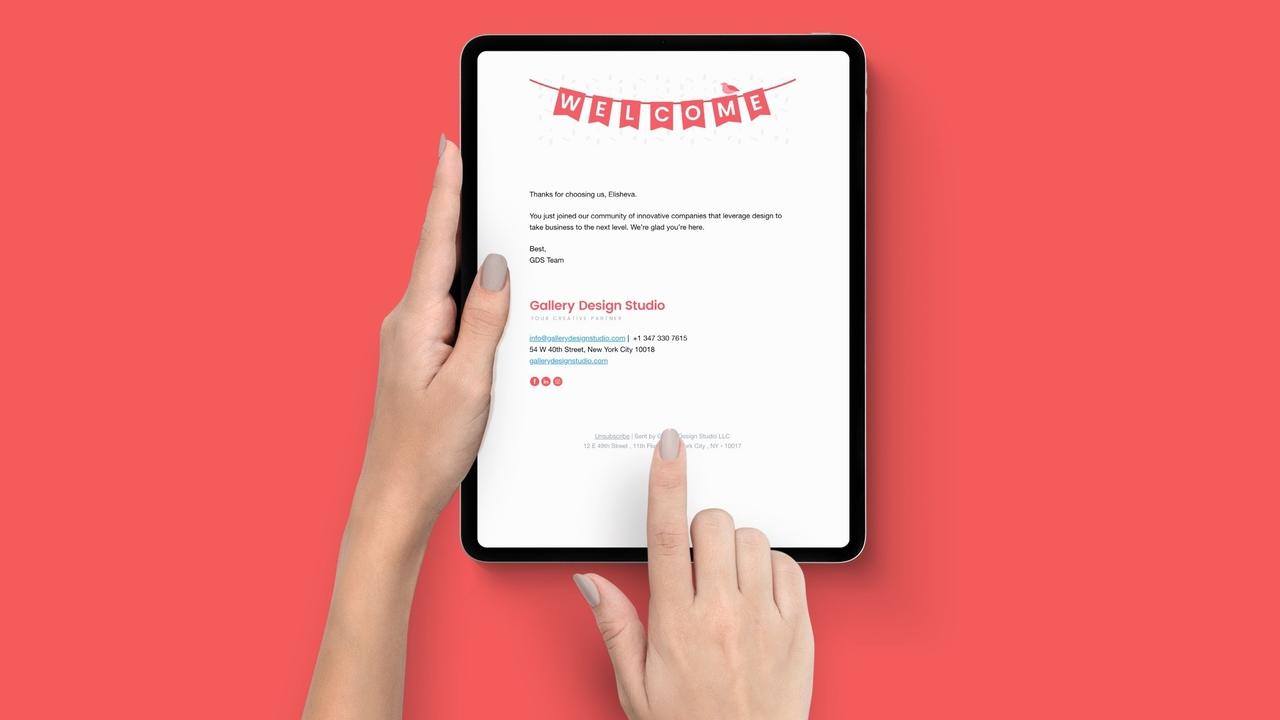The difference between good and excellent onboarding
Sep 16, 2019

Samantha Reid | Former Gallery Design Studio Copywriter
How does your team measure user ROI? Do you consider it a win to just get users to engage a service, sign up for a subscription, or download your product? Most content creators need a lot more than an initial download or a single service purchase to ensure users are maximizing access to everything your company offers. Continuous client usage and access is the key to maximize profits.
Consider this: over the last decade, 20% of the world’s downloaded apps have been accessed one time in the first six months of usage. This statistic illustrates what most of us already know--first-time client usage of products or services isn’t the last step of a sales strategy, but rather an important moment of transition. In other words, you still have a chance to lose the client after the sign-up step.
A well-designed onboarding method gives you the power to retain clients that have already made an initial commitment. Below, we share the first two steps you need to create a successful onboarding experience.

1. Excellent design starts with the end
This may seem counterintuitive to some, but you’ve got to identify the middle and last steps of your process before you design the initial steps. You should know the entire course of actions you want your customers to take before you start constructing an ideal first step.
So, if your ultimate goal for the process is to lead clients to a specific service, how can your initial steps prep them so they have all the knowledge and tools they need to complete the final steps of engaging your services?
Let’s use a simple example. For a cash transfer app like Venmo or Paypal, the ultimate goal is for users to transfer money to each other. A quick visit to the Venmo home screen shows users screenshots of the app and exactly how it works. Before ever committing to using the service, new users already understand some of the app’s basic mechanics.
Visualize the path you’d like the clients to walk so your design can produce the smoothest and most efficient process. Design with the end in mind to make the best beginning.

2. Employ engaging visuals to wow users
After you identify the final steps you’d like your customers to take, it’s time to design a unique, user-friendly experience that makes onboarding easy and seamless for the new user. Good design depends on a variety of factors: simplicity, clarity, color, style and technological integration. The first four elements are part of traditional print media design--the last factor, technology, has become the latest design X factor.
Good designs are easy to use. Excellent designs are enjoyable to use. Great onboarding design creatively integrates technology with your brand’s established style to create a seamless user experience. How you use technology is dependent on the conclusions you drew from step one above.
Incorporating design into your onboarding experience can take many forms. Excellent design considers what method best benefits your clients, whether that’s instructive videos, 3-D walkthrough tools, animated infographics, or a combination of these features.
A strong design team doesn’t just walk a mile in the client’s shoes--they run a marathon by painstakingly reviewing the entire step-by-step onboarding process with the fresh eyes of a novice user. Good design is only the beginning of creating a stellar onboarding process. Excellent design is a continuous refining process until the desired results are clearly achievable.

Bottom line
The way your virtual platform or in-person team welcomes, guides, and educates users is key to generating maximum ROI. Excellent onboarding does more than draw new users, it retains them.
About Gallery Design Studio
We're passionate about helping B2B businesses with their ongoing marketing communication design needs. We help our clients transmit complex information clearly, concisely and in a visually engaging way. Relentlessly curious, we're inspired by experimentation, and always looking for better ways to serve our clients.
We’ve collaborated with transformational businesses and government agencies such as The NYC Law Department, CIT Bank and Questback.
Our services:
- Communication and Marketing Design
- Video & Animation
- Web & App design (UX/UI)
- Digital Customer Experience Design (DCX)
Need creative support yesterday? Learn more about how we can help.
About the Writer
Samantha is a copywriter at Gallery Design Studio. Samantha is passionate about using precise and evocative messaging to connect with clients. She has written for journals, online publications and blogs.



